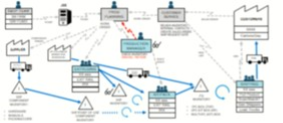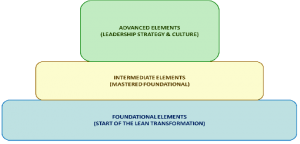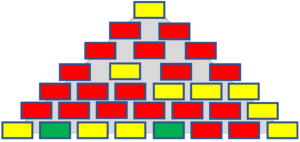
Drawing from an old proverb, the title of this discussion is more than just a catchy tag line – it is good advice for minimizing risk when your firm’s focus is on operational improvement.
Part of “looking” before you “Lean” is having that guiding vision in place for the organization so the workforce implementers can be confident and successful in their execution. The vision doesn’t have to be polished and perfect, but it does need to be achievable and supported at every opportunity.
Strategic Vision – Own it and Support it
In a successful organization that is driving positive change through Lean efforts, a defining vision or strategy from executive leadership is typically present in some form or fashion. Some visions can be nebulous, stating “world-class” as the desired state, but what really is that? Visions need to be comprised of defined elements with measurable metrics supported by data. We need objectivity to outweigh subjectivity. What varies is the degree to which this vision has been developed and integrated into the organization. The resources you dedicate to your Lean journey need both a compass point to aim for and the tools and support to navigate the day-to-day paths of identifying and eliminating waste (the very ESSENCE of Lean).
Where to Start? Find a Baseline and Plot a Course
In theory, with a 10-minute primer on the eight types of operational waste, one could start waste reduction efforts this afternoon. But where would you start? You could easily divide and conquer (the shotgun approach), which would likely result in small improvements across different areas of your firm, but the efforts will be difficult to quantify and probably not sustained over time. We encourage human action sooner than later; however, we believe that a baseline should be established as a starting point so that resources can be directed properly to do the “right things” at the right time and place (the sniper rifle approach).
The optimal way to establish this baseline is to use a Manufacturing Excellence Audit, what we call MEA. The MEA is a structured yet versatile tool to identify gaps in the manufacturing operation as well as in supporting or satellite functions or departments.
The MEA starts with a process map or other simple graphic depiction of your operation. Familiar and common examples are the simple Process Flow Chart and the Value Stream Map (see examples below). These provide an aerial view of what is moving throughout your organization, be it material, information, or people. The main advantage of approaching the operation this way is that most people, regardless of job function, have viewed or constructed a flow chart at one time in their lives.

Process Flow Chart |

Value Stream Map |
After the process map is completed and the high-level operation steps and moves are diagrammed, the MEA takes a deeper dive into your operation. Through a series of interview questions and an observational review, the MEA looks at various manufacturing and operational excellence facets. First, we look into the foundational elements, the base of the pyramid, and truly the enabling items considered to be “manufacturing 101”. From the foundational elements, we progress to intermediate and advanced elements, moving up the pyramid model. Based on the responses and evidence provided by process users and owners, the individual facets can then be scored in a traditional RYG scheme (see below).
 |
 |
 |
With this approach, it is relatively easy to organize and prioritize the deficient red and yellow elements and even cascade or leverage the good things done in the green elements. In either case, the path forward can easily be plotted and scoped for time-frame and resource alignment. Conducting and interpreting a Manufacturing Excellence Audit can be a game-changing force within your organization.
Then What? Execute
Once we’ve established the MEA baseline, the team will review the results and create a project plan for improvement. With the plan in place, we can assign resources and a timeline for execution. Just like a line or process on the shop floor, you have to check that proper progress is being made according to the project plan. If the project is falling behind, find out the true root causes as to why. We may have to make minor adjustments to the plan along the way, but if you find that the plan is always behind and always off target, you may have a management systems issue. (We will address this subject in a future discussion.)
Summary
Look before you Lean essentially states:
The critical element in this process is the MEA. St. Onge Company is highly capable and readily available to come into your operation, execute the MEA, and review the results with your internal team before you jump into Lean activities. We have years of experience in designing, implementing, and guiding operational improvement programs, and we can help you “look before you Lean.”
–Mike Noll, St. Onge Company